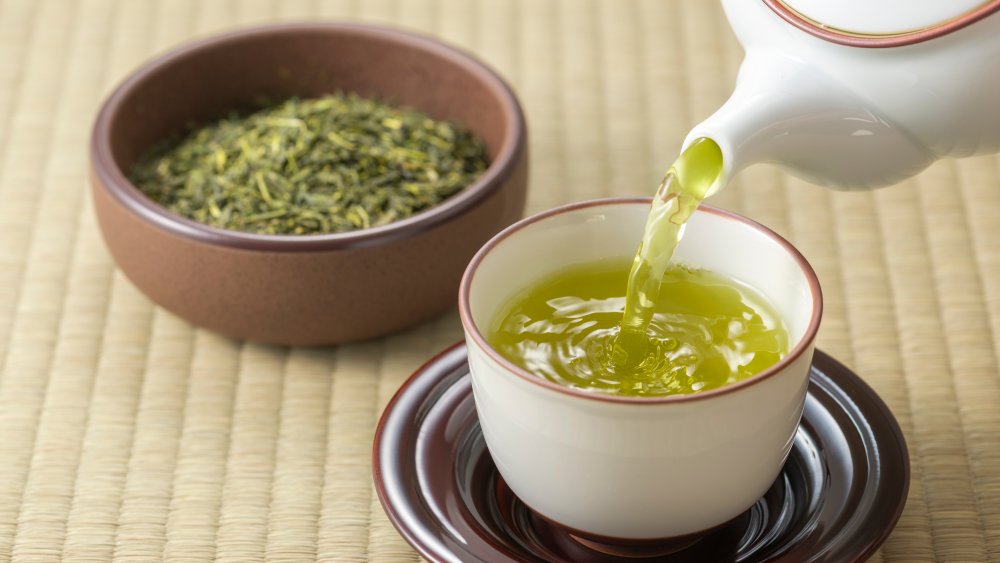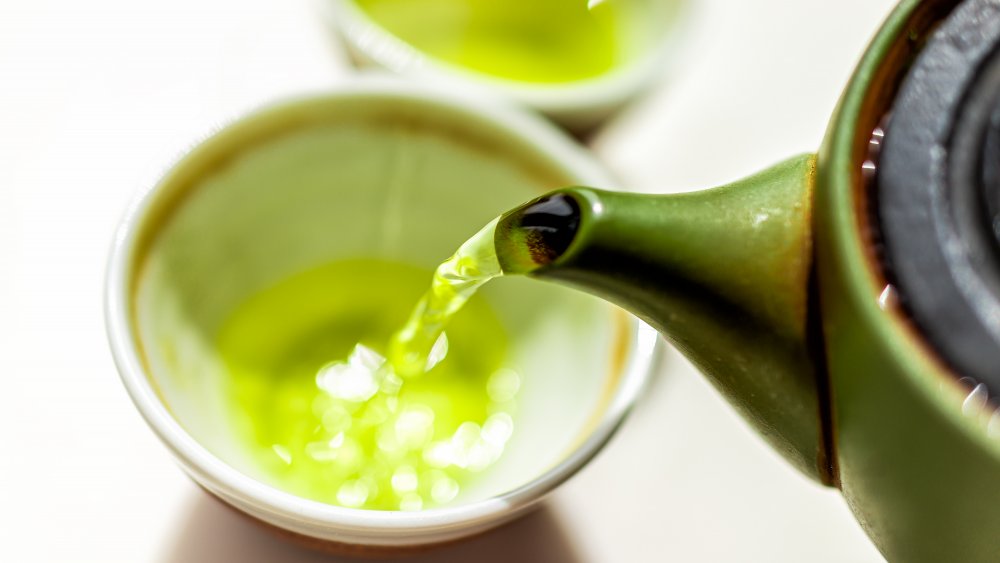This Is Where The Flavor Of Green Tea Comes From
Green tea is one of the best beverages to drink, thanks to all of its antioxidants. According to Healthline, green tea can not only improve brain function, but also assist in weight loss, protect against cancer, and lower your risk of heart disease. Of course, the key to introducing any healthy eating or drinking habit into your routine is to ensure it's sustainable for you, which starts with the flavor. According to Sencha Tea Bar, when compared to other teas, green tea is usually less-processed, meaning it retains a lot of the earthy and natural compounds that add to its distinctive flavor. Simple Loose Leaf says that, in particular, catechins, chlorophyll, and caffeine are compounds found in green tea that can cause the bitter taste some associate with the drink.
Other parts of the green tea making process impact the flavor as well. After being picked, green tea leaves are either pan fired or steamed to prevent oxidation, with pan fired leaves tasting grassy and toasted, while steamed leaves taste more vegetal with hints of sweetness (via Sencha Tea Bar). Additionally, green tea is very sensitive to high water temperatures and long steeping times, which is why — when brewed too hot or for too long — green tea can develop an off-putting, bitter and unpleasant flavor. Luckily, with just a few tips, you can ensure a perfect cup every time.
How to combat bitterness in your green tea
First things first, step away from the tea bags. While they might be more convenient, Sencha Tea Bar explains that tea bags contain tea dust and broken leaves, and as such don't offer all of the potential benefits present in the complete leaves. Tea bags also don't give green tea leaves enough room to fully expand. If you really don't want to wash a reusable steeper, you can always purchase large, empty tea bags online and fill them with the green tea of your choice for the best of both worlds.
Once you've got your high-quality, loose leaf tea, be sure to read or research the steeping instructions carefully. For one thing, your water should never be boiling hot, but rather between 150 to 180 degrees Fahrenheit, depending on the tea you're using. While it might seem insignificant, small temperature differences really will impact the flavor. Finally, most green teas only need a very short steeping time, almost always less than two minutes. Leaving them for any longer will result in a bitter brew. To avoid this, we suggest you set an alarm on your phone as soon as you place the tea in the water to ensure you aren't over-steeping. If, after all of this, your green tea is still too bitter, you can always add some fresh lemon, ginger, mint, or honey to make the flavor more palatable (via Spoon University).

